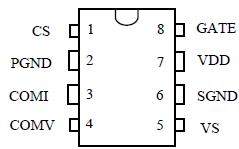SGP100: Features: ` Constant-voltage (CV) and constant-current (CC) control without secondary-feedback circuitry` Green-mode function: PWM frequency linearly decreasing` Fixed PWM frequency at 42kHz with...
floor Price/Ceiling Price
- Part Number:
- SGP100
- Supply Ability:
- 5000
Price Break
- Qty
- 1~5000
- Unit Price
- Negotiable
- Processing time
- 15 Days
SeekIC Buyer Protection PLUS - newly updated for 2013!
- Escrow Protection.
- Guaranteed refunds.
- Secure payments.
- Learn more >>
Month Sales
268 Transactions
Payment Methods
All payment methods are secure and covered by SeekIC Buyer Protection PLUS.

 SGP100 Data Sheet
SGP100 Data Sheet








